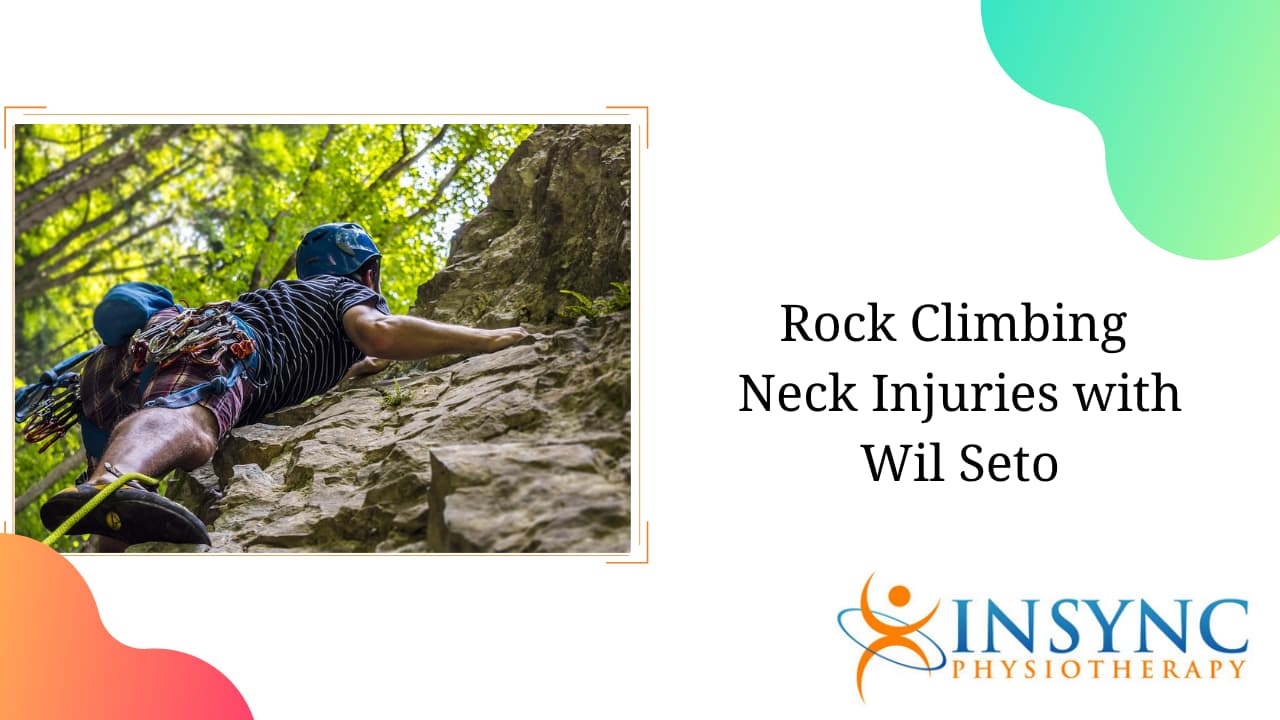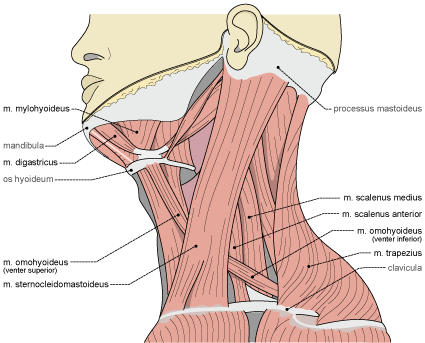Rock Climbing Neck Injuries with Wil Seto
Mark: Hi, it’s Mark from TLR. I’m here with Wil Seto he’s the owner of the chief cook and bottle washer. Not really. He’s the big chief at Insync Physiotherapy in Vancouver and North Burnaby. And we’re going to talk about rock climbing neck injuries today. How are you doing Wil?
Wil: I’m doing well. Thanks. And I have actually washed bottles for a job once before, so.
Mark: Me too actually. So, rock climbing neck injury. So this doesn’t seem like it would be a very common thing. How common is injuring your neck while rock climbing?
Wil: Well, you know, it’s interesting, it’s more related to sort of the chronic issue and I guess you could classify it as repetitive strain. And there’s a couple of different aspects to it.
So one of the common ones that you know, if we put a label to it, we call it the belayer’s neck. So for people who like basically, you know, belay and they climb like this, and they’re always basically shortening up those muscles. Now there’s a few aspects of belayer’s neck. And then just in general, people who are like climbing really hard, but aren’t doing a lot of mobility work to really make sure that they’re recovering the full mobility of their neck and their spinal joints and their associated areas that around the neck. Because there’s a lot of muscles that attach from the neck to the shoulder and then from the neck to the upper back and all that stuff.
Mark: So the symptoms would be pain, I would assume.
Wil: Pain and stiffness. Those are the biggest ones. And occasionally it can get bad enough where you have like a radiating pain or nerve pain. So that’s where it gets a little bit more extreme where there’s like a sort of a pinched nerve.
Mark: And the causes are basically, like you said, it’s chronic it’s from looking up all the time or maybe not having great biomechanics for other things because you haven’t worked on it. And so you’re using your neck in a way that it’s not really meant to be, or trying to compensate using your neck muscles. Is that.
Wil: Yeah. So what happens is that there’s an imbalance once again. And you have a lot of tightness in certain muscles, and sometimes it’s tight in the front too. And obviously really tight in the back. And so what ended up happening is that you don’t get the proper extension in your neck and you’re actually pinching in and only moving in limited joints and extension through the neck when you should be extending throughout every segment in your neck.
So that’s important to understand because then when you’re looking at the muscles that they get really tight. Then it contributes to that effect. And so what we need to really help people understand, like climbers understand you know, the mobility work to get that moving, even when it doesn’t feel symptomatic is really important to do. Especially if you’re an avid climber or especially if you’re a competitive climber and someone is looking at increasing your training level to really hit personal goals.
Mark: So someone comes in. They’re a rock climber. They’ve got neck problems. How do you diagnose it?
Wil: Yeah. So one of the main things, I was saying earlier that you know, that you can get from like limitation and the movements and the mobility, and the pain could also be coming on a little bit more where it’s more than just stiffness and soreness. Now it becomes like, Oh, pain, I can’t even like look up. To even like radiating pain down the arm where they may not even have pain in the neck. So we need to differentiate and figure out which one of those are, right. So we have to look at, is it coming from the joint? Is that why you’re getting the issue.
Most likely, it’s a combination of that with the imbalances in the muscles. And then if it’s a pinched nerve, we have to figure out okay, which areas. And then start to alleviate that. Because we want to make sure that we start to get that moving properly as well, so it alleviates that.
Mark: So depending on what the diagnosis is, that determines what the course of treatment is going to be.
Wil: Absolutely. And then just a little bit more on the whole, like radiating pain and the nerve pain, you know, if we find something that’s a little more serious, something that we think that requires more medical diagnosis or getting to have your family physician to take a look at it. It’s important because maybe there’s some going on there where it’s affecting the nerve health. And so when we assess that and examine it we can determine how much is it being affected in the nerve.
Mark: And in terms of, because climbers want to get back climbing right away again, how soon can they get back to it typically?
Wil: Pretty soon. I mean like you can still keep climbing. Like I’m treating a climber right now, who’s had a past history of a pinched nerve. But no longer has that, but presents with some symptoms of weakness related to the pinched nerve, which he doesn’t even know about, which is interesting. And still climbing. Still training hard and addressing this issue. So that’s an example from one that I’m treating right now who had that.
Another example, I’m treating someone who it hurts just to look up and then we look at his movement is so stiff that even when he brings his arms up you know, he can barely bring his arms up to here. How can you even possibly climb? And it’s been sort of gradually building up. It’s interesting. He’s just noticing how he’s more stiff and more stiff. And he tries to do things that stretch it out before he climbs and really open things up more forcefully and it’s just, he’s so compressed.
He doesn’t realize that, you know, the more that he’s climbing right now, the more he’s making it worse. And he has definitely sort of a lot of weakness in a lot of other areas that are most likely related to the nerves in the neck. So here are we going to tell him reign it in a little bit and let’s just give it a week’s rest and then we’ll get you back climbing in a week. And then we’ve got to do more of a gradual step approach. And this is quite common, too. I see a lot of people that are like that.
And then we have another example of another climber who doesn’t have any radiating pain. Doesn’t have any weakness. It’s just stiff and they can keep climbing as normal as well. So two, three treatments and they were good. And got him on an exercise program, building on manual therapy, mobilization techniques to work the joint. Keep them moving and get the muscles that needed to be strengthened and really work on, you know, relaxing and resetting those muscles that are really tight. That way things work more properly.
Mark: How important is it that the climbers follow the exercise program you give them, in terms of how well they’re going to, over the long-term not have this problem recur?
Wil: It’s pretty important. And I think it’s funny because you know, we take them through maybe a couple of treatments, and then give them the exercises, they’re doing and they feel great. But then I’ll see them again in a year or maybe a couple of months, they’ve increased the training more and ask them well, what’s different other than the training.
Oh, I haven’t done my exercises that much. And so it’s important because the exercises that we give you are individualized to what’s going on. So we look at what needs to be targeted and what needs to you know, really be emphasized in terms of even like warm-ups and stuff. And so when those aren’t being done and you figure a climber and you’re like pushing and increasing the intensity, then it’s an obvious recipe for something to happen in the future. If you’re going to continue climbing, at an avid level and especially at a competitive level.
Mark: If you’re a rock climber in Vancouver with some neck issues, stiffness pain, you want to get it fixed. The guys to see are Insync Physio. You can reach them in Vancouver at 604-566-9716 they’re on Cambie and King Edward or in North Burnaby, 604-298-4878 to book. Or of course you can book online at insyncphysio.com. Thanks Wil.
Wil: Thanks Mark.



